Castle Garden Ideas: Enchanting Ways to Transform Your Yard
If you’ve ever dreamed of transforming your backyard into a fairytale paradise, exploring unique and enchanting castle garden ideas might be just what you need. Whether you have a large estate or a small urban yard, castle garden concepts can add a touch of magic and historical charm to your outdoor space.

What makes these gardens captivating is the blend of lush greenery, intricate designs, and whimsical decorations. From ivy-covered walls to charming fountains, you can create a garden that feels straight out of a storybook. Dive into the world of castle gardens to find inspiration and tips for turning your garden into a magical retreat.
1) Fairy Light Pathway
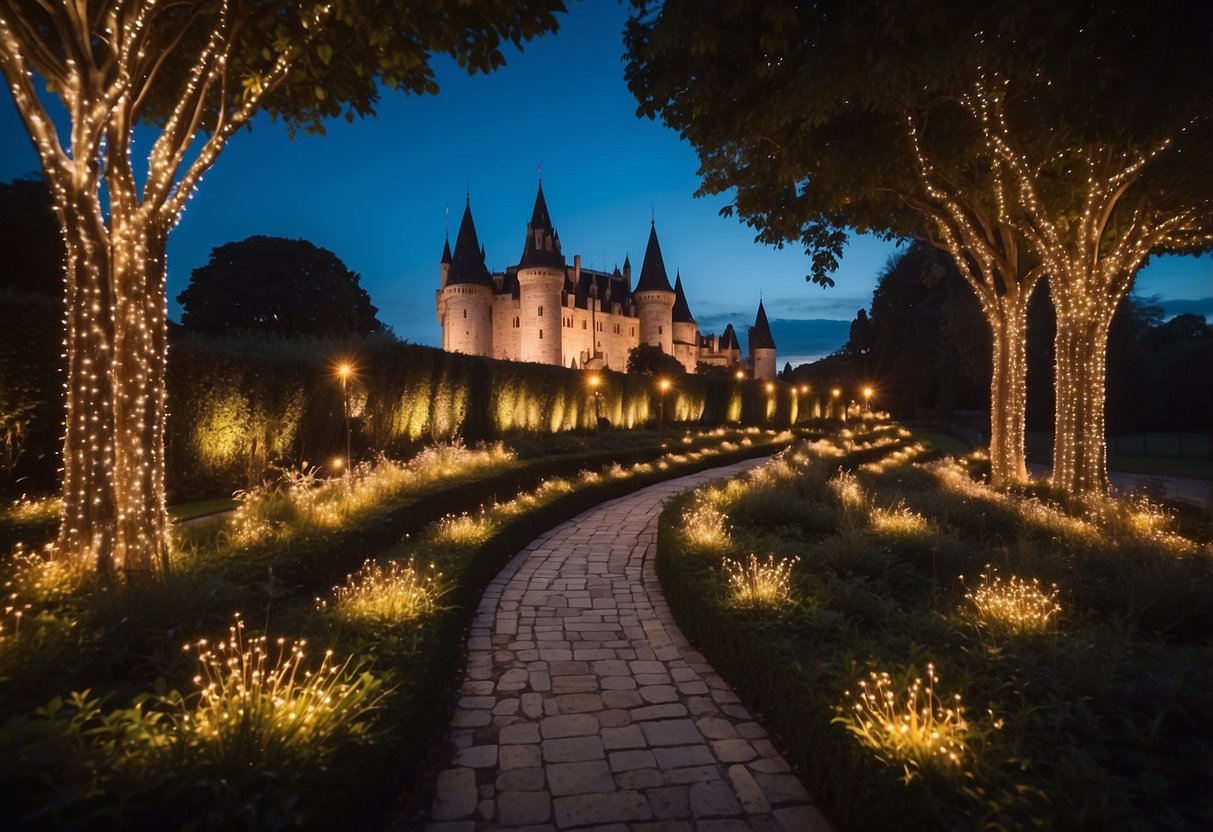
Create a magical feel by lining your garden paths with twinkling fairy lights.
Use small solar-powered lights to save energy and make installation simple.
String lights along the edges of the pathway or wrap them around bushes and trees nearby. This adds a warm, inviting glow for evening strolls.
2) Medieval Garden Fountain
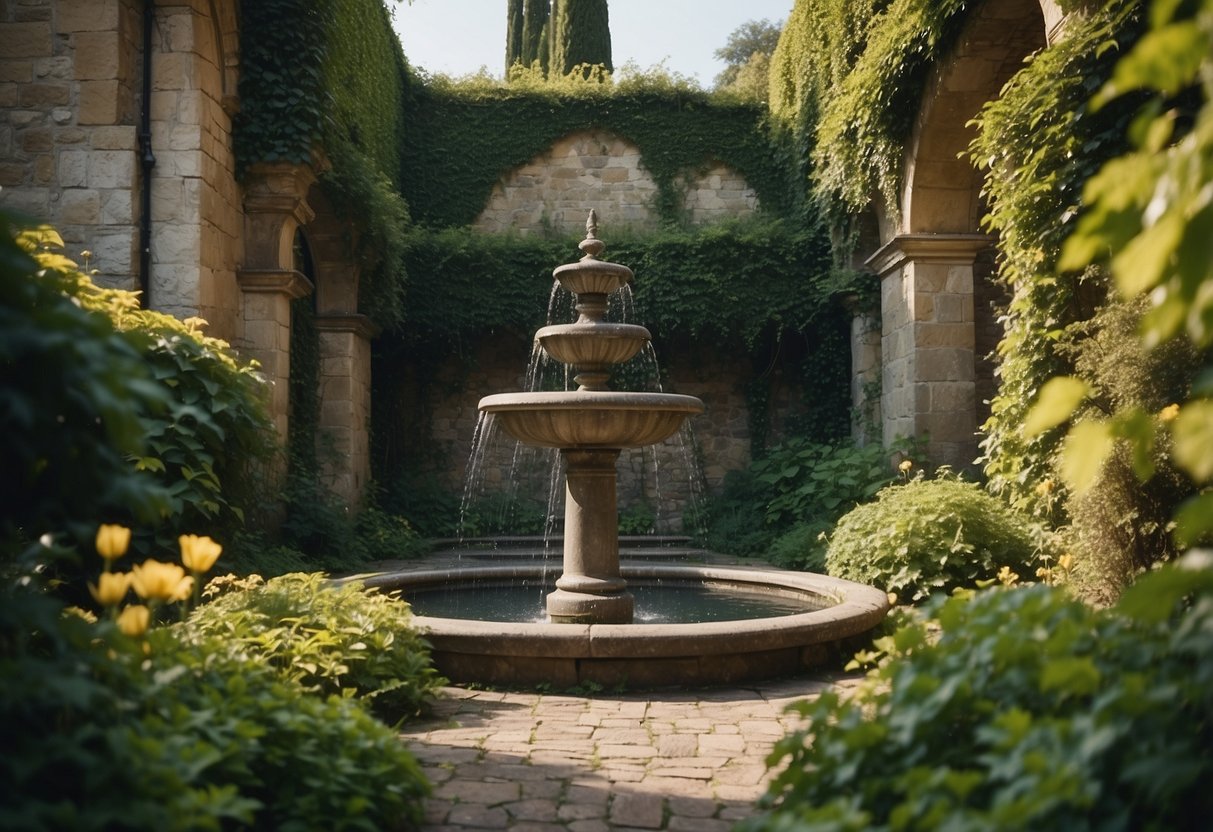
A medieval garden fountain adds a touch of elegance and history. These fountains were not just for decoration; they provided water for both people and plants.
You might place your fountain at the center of your garden. This creates a focal point and can be a great spot for relaxation.
Fountains often featured ornate designs. Materials like stone or ceramic were common, giving a rustic and authentic feel. You can explore designs inspired by historical styles to keep the medieval spirit alive. For more ideas, check out the medieval garden inspiration.
3) Secret Rose Garden

Creating a secret rose garden adds a touch of magic to your castle grounds. Start by choosing a secluded spot.
Use tall, fragrant roses like the climbing rose to create natural walls. This helps craft a hidden area that feels cozy and private.
An arbor covered in roses makes for a beautiful entrance. Add seating with an outdoor rug to make the space inviting.
4) Stone Archways
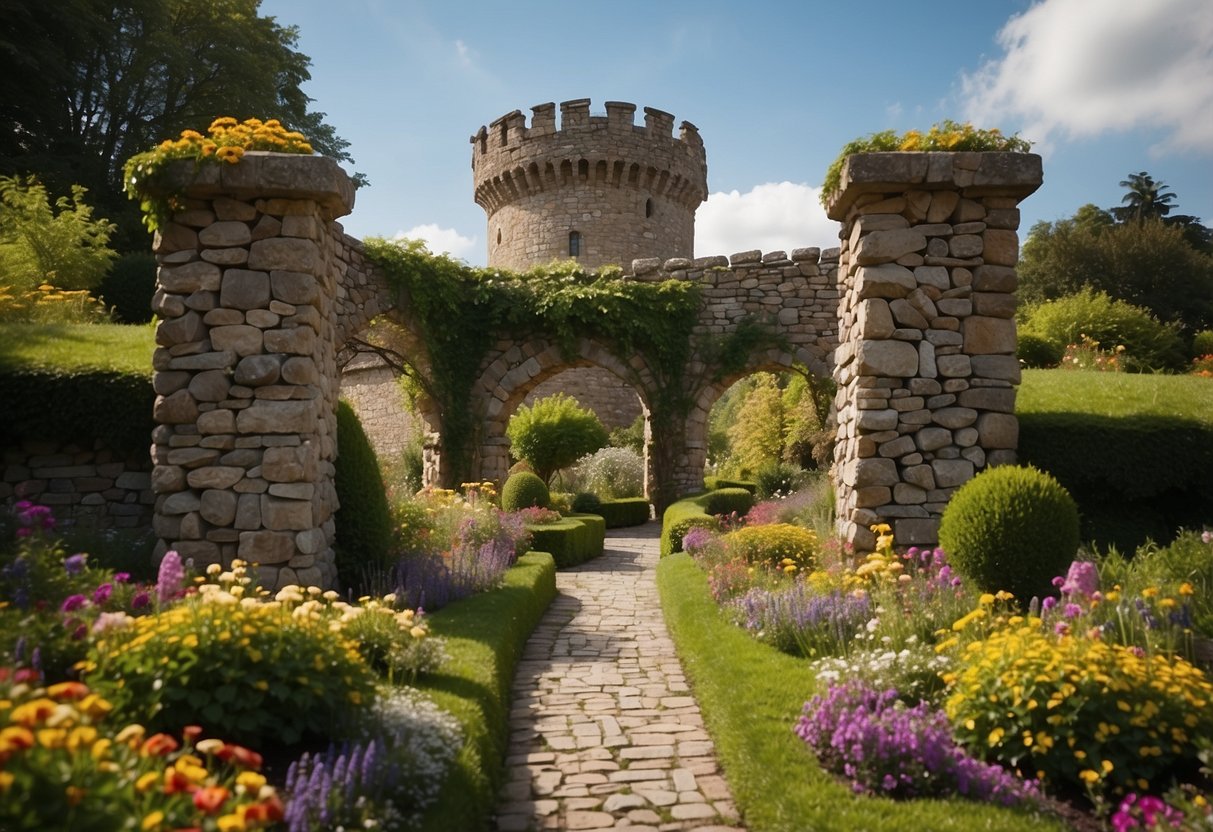
Stone archways can add a touch of medieval charm to your garden. They create a beautiful entrance and can make your space feel like a fairy tale.
Consider using natural stone for a rustic look. You can find inspiration from various designs on platforms like Pinterest.
An arched stone gate surrounded by lush greenery can be magical. Imagine walking through a stone archway covered in ivy, much like the Ivy Covered Moon Gate crafted by Fifth Season Landscape Design. It adds a mystical and enchanting vibe to your garden.
5) Knights’ Armor Statues
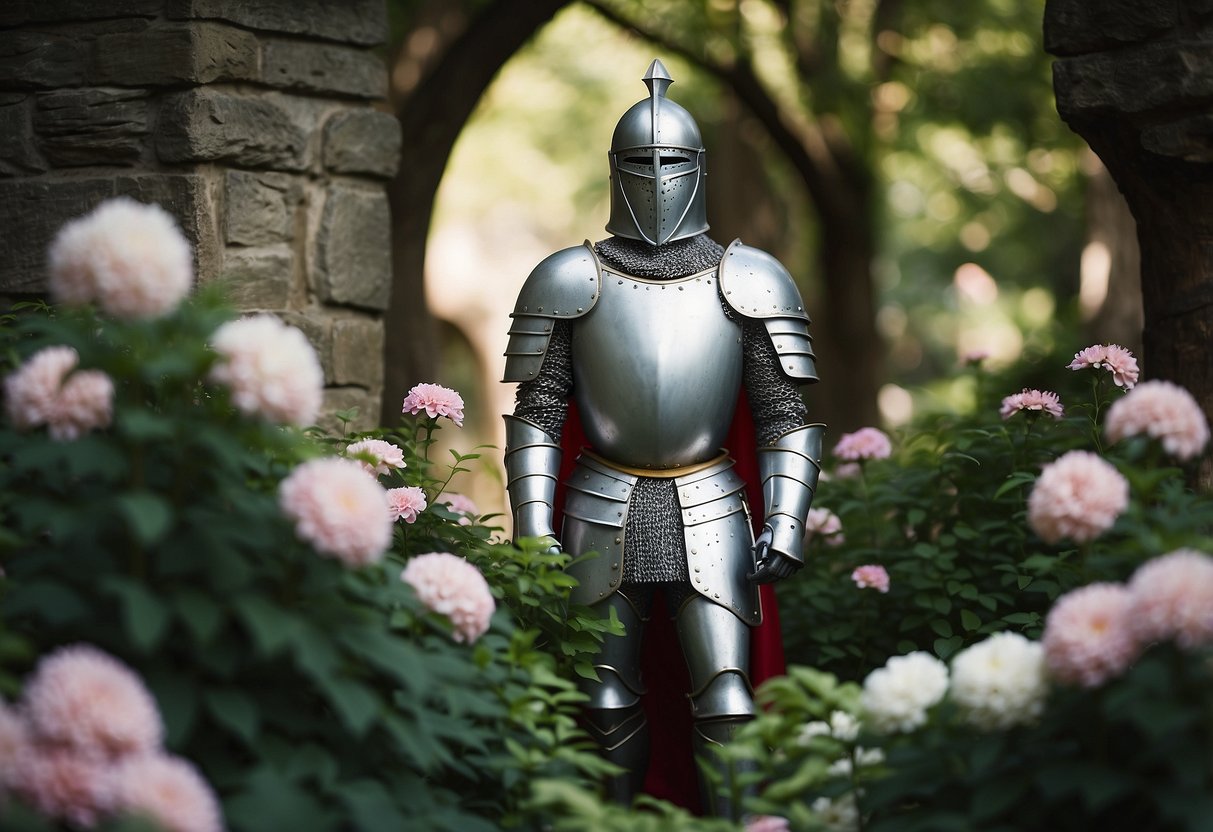
Add a touch of medieval flair to your garden with knights’ armor statues. These statues celebrate the bravery and chivalry of knights from days gone by.
You can find unique options like knights with halberds or knights on horses. These pieces make your garden feel like a castle courtyard.
Knights’ armor statues are a perfect blend of history and artistry, fitting seamlessly into any garden design. They make great focal points and conversation starters.
6) Moat with Lilies

Imagine a moat filled with beautiful water lilies around your castle garden. Lilies float gracefully on the water’s surface, adding a touch of elegance and charm.
You can choose lilies in different colors like white, pink, or yellow to make the moat look vibrant. They’ll not only look beautiful but also provide a calming atmosphere.
Lilies are relatively easy to maintain and can attract wildlife like dragonflies and frogs. Plus, they help keep the water clean by absorbing nutrients that might otherwise cause algae.
7) Castle Tower Treehouse
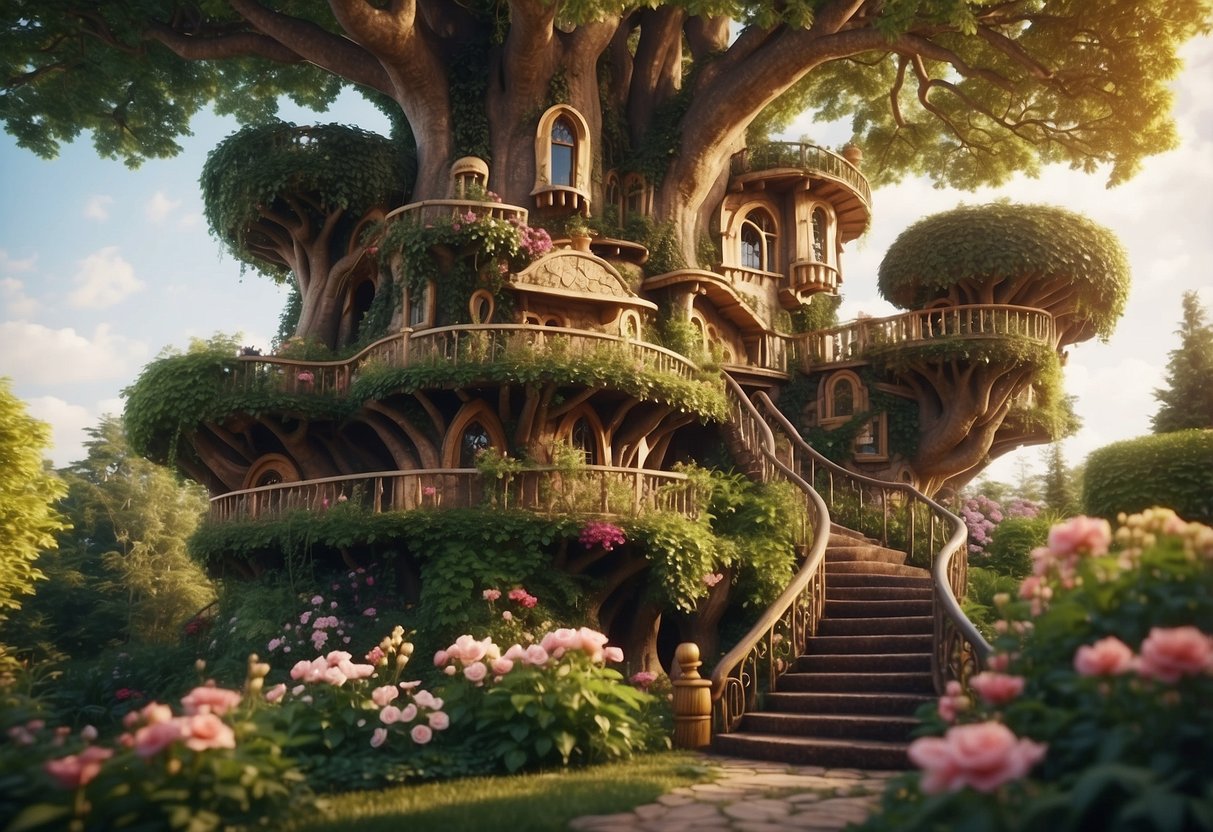
Imagine a castle tower treehouse right in your backyard. This magical structure combines fun and creativity for your kids.
A treehouse with a castle theme can include features like a climbing wall, slide, and rope bridge. It’s a place where young explorers can let their imaginations run wild.
Using natural materials like pine and Douglas fir adds to the rustic charm. This treehouse will blend beautifully into your outdoor space.
8) Wishing Well
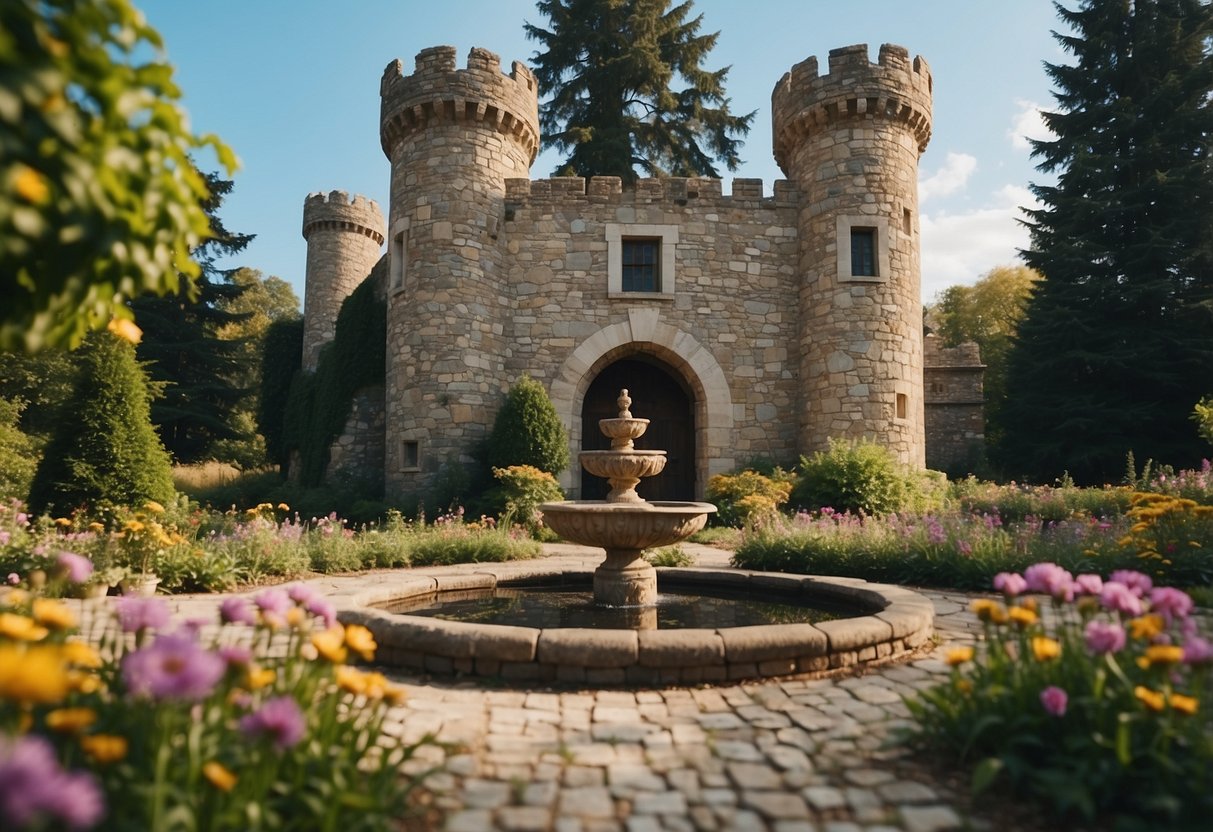
Adding a wishing well to your castle garden can bring a touch of enchantment. It’s a charming focal point that invites imagination and play.
You can build a DIY wood wishing well with simple materials. For a more rustic look, consider creating a large stone wishing well using natural stones.
Using recycled materials, such as tires, can make your project eco-friendly too. Check out these recycled tire wishing well ideas to get inspired!
9) Castle Wall Trellis
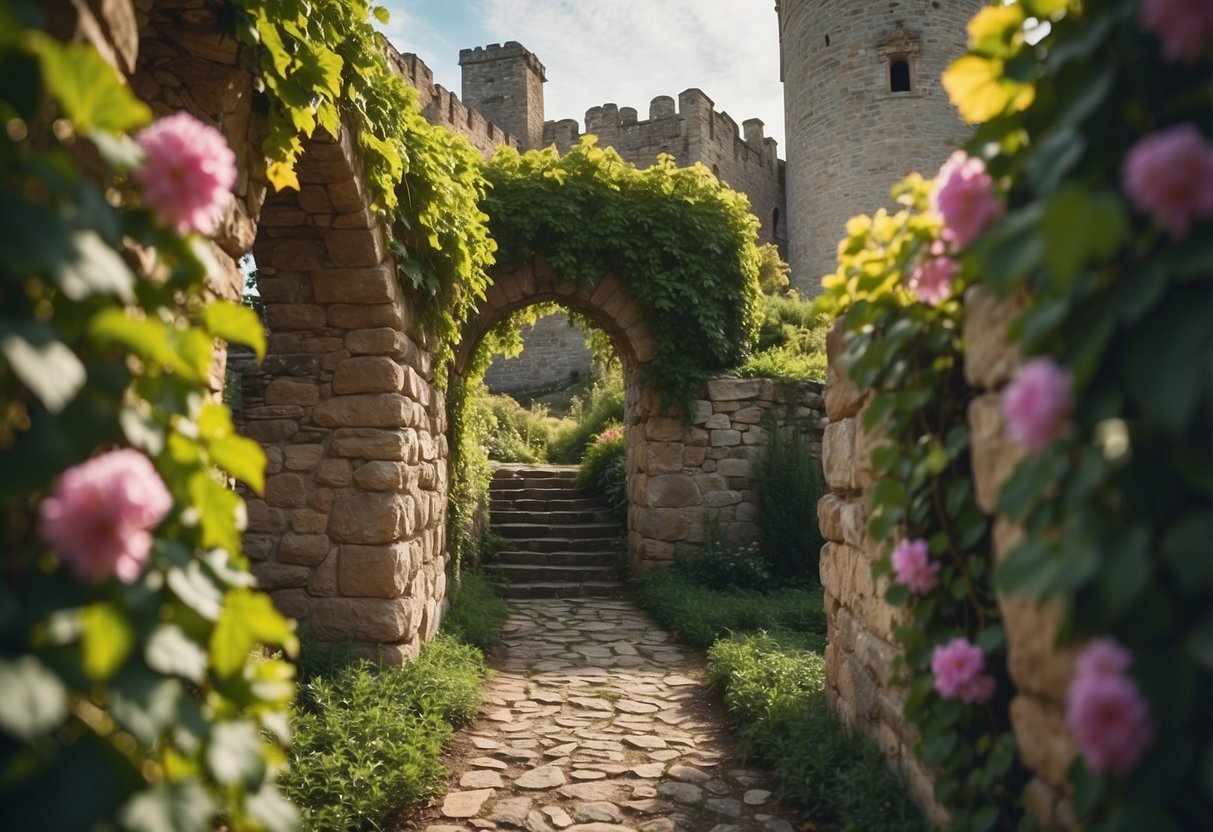
Using a trellis on a castle garden wall can add charm to your garden. You can mount a small trellis on the wall to support climbing plants like roses and ivy. This not only adds beauty but also helps cover any rough spots on the wall.
Choose a trellis made from strong materials such as wrought iron or wood. Make sure your wall gets enough sunlight for the plants you want to grow. Climbing plants on a trellis can create a lush, green backdrop that feels like a fairy tale setting.
Explore more ideas on building and using trellises in your garden from resources like this garden trellis idea.
10) Dragon Topiary

Transform your garden into a magical place with a dragon topiary. These green sculptures can add a touch of fantasy to your outdoor space.
You can find many ideas for dragon topiaries that range from simple shapes to intricate designs. Start small if you’re new to topiary art.
Once you’ve chosen your design, gather your tools and start trimming and shaping. Place your dragon where it will get plenty of attention—from your front yard to a cozy garden corner. Enjoy your unique, whimsical creation!
Design Principles for Castle Gardens

In designing a castle garden, you should incorporate elements that reflect historical authenticity while balancing functionality with aesthetic appeal.
Incorporating Historic Elements
To give your castle garden an authentic touch, use features that were common in medieval and renaissance times. Hedges and topiary are classic choices, creating defined spaces. Herb gardens were also popular, both for their beauty and utility. Incorporating fountains or water features can provide a focal point, reflecting the opulence of the era.
Pathways were often paved with cobblestones or gravel. Use stone walls and arches to evoke a strong historical feel. If you have space, consider adding a moat or wooden bridge, as these were often part of castle defenses. Climbing plants and flowering vines around these structures complete the look, making the garden feel timeless.
Balancing Function and Aesthetics
A castle garden should be practical as well as beautiful. Plan areas for both relaxation and utility. For example, a kitchen garden can provide fresh ingredients for your table. Arrange plants by color and height to create visual interest and make sure to incorporate seating areas where you can enjoy the surroundings.
Pathways should be wide enough for easy movement and can guide you through different garden sections. Lighting is also important for functionality and ambiance. Use lanterns or low lights to illuminate paths and highlight key features.
When selecting plants, consider the climate and soil of your location. Choosing native or historic plants ensures easier maintenance and a more authentic look. Pay attention to seasonal changes, ensuring your garden remains attractive year-round.
Plant Selection for a Castle Garden
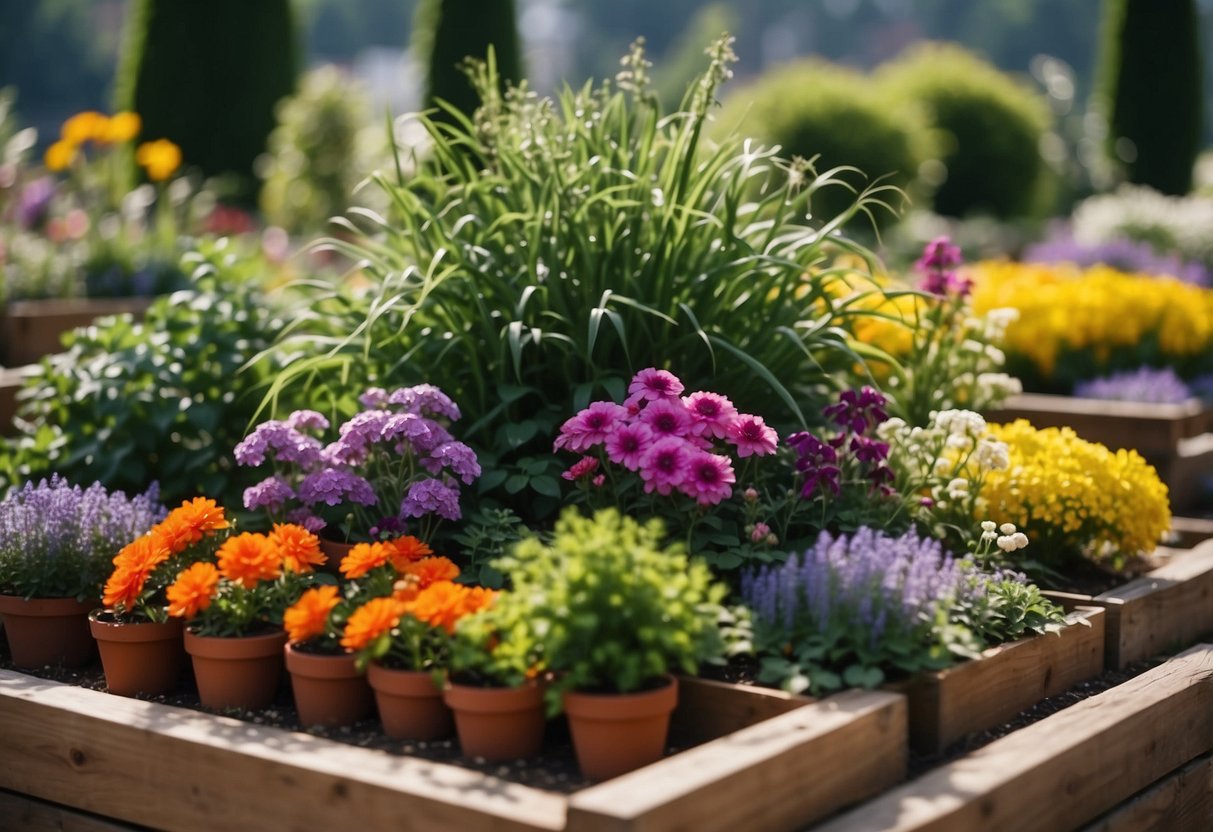
When planning your castle garden, it’s crucial to consider native species and how to handle seasonal planting. This ensures a well-balanced and sustainable garden that thrives year-round.
Choosing Native Species
Selecting plants native to your area is important because they are well-suited to the local climate and soil. Native plants require less water and maintenance compared to non-native species. For instance, if you live in England, consider foxgloves, lavender, and roses.
These plants not only add historical authenticity but also attract local wildlife. Foxgloves are tall and elegant, making them perfect for adding height to your garden. Lavender provides a lovely fragrance and is a hardy plant that withstands various weather conditions. Roses offer timeless beauty and are available in many varieties that suit different design styles.
Another advantage of choosing native species is their resistance to local pests and diseases. This reduces the need for chemical pesticides and promotes a healthier garden ecosystem. Incorporate hedges and vining plants such as ivy to create natural borders and frames within your garden.
Seasonal Planting Tips
Planning for different seasons ensures your garden looks vibrant year-round. In spring, plant bulbs like daffodils and tulips to herald the start of the growing season. These flowers are hardy and add bright colors to your garden early in the year.
During summer, focus on flowers like marigolds and sunflowers. These plants thrive in warmer weather and bring bold, cheerful hues. Maintain a mixture of perennial and annual plants to keep your garden lively all season.
In the fall, incorporate plants like chrysanthemums and ornamental cabbages. These can tolerate cooler temperatures and add interesting textures and colors to your garden. For winter, consider evergreen shrubs and trees to provide structure and maintain some greenery even in the cold months.
Use a planting calendar to schedule when to plant each species, ensuring they are sowed and bloom at the right times. Rotating plants and using seasonal varieties helps keep the garden diverse and adaptable to different weather conditions.







